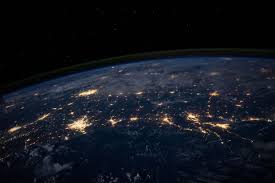Source: earthmaven.io
Throughout the last 650,000 years, there have been seven ice ages. The most recent, around 7,000 years ago, marked the beginning of the modern climate era and human civilization.
This current shift in the earth’s environment is significant, as it’s more than 95 percent likely induced by human activity, such as the burning of fossil fuels. The gases released by these resources trap heat in the atmosphere and cause the global temperature to rise. Not only will this increase lead to more intense heat waves, but it will destroy ice caps and warm ocean waters, affecting natural habitats.
While some still deny global warming, others have taken charge. Discover how scientists are using machine learning to help mitigate the effects of climate change.
Mass Data Analysis
One way scientists can understand climate change’s effects and make predictions is through data collected via sensors, gauges and monitors. The massive amount of information generated is too much for a team of humans to parse through.
Machines, on the other hand, can analyze this data, pinpoint patterns and develop actionable insights. Experts can also use this technology to test out what-if scenarios and possible solutions for reducing air pollution.
Google’s servers, for instance, power billions of web searches each day, accounting for roughly 2 percent of all greenhouse gas emissions. In 2016, however, the tech powerhouse used machine learning to cut its data centers’ energy by 15 percent.
Extreme Weather Prediction
As mentioned above, machine learning can assess massive amounts of data and make actionable predictions. Not only does this technology apply to manufacturing and infrastructure, but it can aid the prediction of extreme weather events.
As climate change progresses, we can expect to see more intense hurricanes, heat waves, destructive thunderstorms and more. Machine learning, however, can help us to prepare for and mitigate damage.
Meteorologists already use artificial intelligence (AI) to predict how long a storm will last and if it will produce damaging effects, such as hail. The technology can also make accurate determinations on where an event will strike.
Carbon Dioxide Removal
In an ideal society, we would implement zero-emissions policies. Yet making that change today wouldn’t negate the consequences of greenhouse gases already in the atmosphere.
Eliminating emissions is challenging, as carbon dioxide (CO2) comes from a variety of sources — airplanes, construction, cows, etc. However, machine learning can help in the sequestration of this gas by identifying and characterizing potential storage locations.
Gas and oil companies already use this technology to capture subsurface images. Experts can repurpose these models — and the included data — to trap CO2 instead of release it. Plus, machine learning can track and monitor active sequestration sites.
Automated Manufacturing
Factories are major contributors to waste and pollution. Yet with machine learning algorithms tailored to specific products and industries, it’s possible to improve efficiency and reduce consumption.
Compared to manual inspection by employees, automated manufacturing uses a sophisticated level of analysis. These bots learn as they work, allowing them to see more and make decisions faster.
Machine learning’s capabilities extend beyond humans’. It’s able to quantify internal qualities like chemical identification, constituent concentration and contamination. Plus, the use of this technology can significantly reduce a product’s time to market.
Consumer-Driven Products
While industry causes much of the pollution that leads to climate change, individuals still want to do their part. Machine learning allows everyone to get involved with cost-effective and easy-to-use devices.
A programmable thermostat, for example, can save a home $180 per year in energy costs. Plus, a smart system can learn your preferences, automatically controlling the temperature and maximizing efficiency at the same time.
A home irrigation system using this technology can reduce water waste. It optimizes usage based on your goals, whether it’s to improve crop yield or diminish diseases. It also measures the impact of your efforts and identifies potential problems.
How Machine Learning Can Mitigate the Effects of Climate Change
Climate change is one of the top issues of the 21st century. If we don’t take action now, the effects may be irreversible. It’s crucial to think about the future of our planet and all the people living on it.
Machine learning will play a significant role in the mitigation of global warming. From carbon dioxide removal to products aimed at consumers, learn how this technology is helping the human race.
